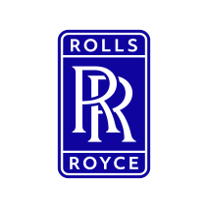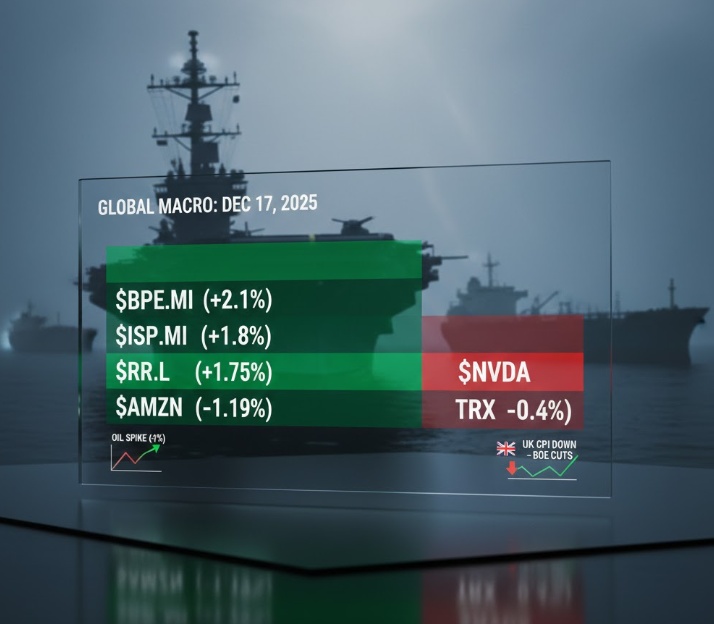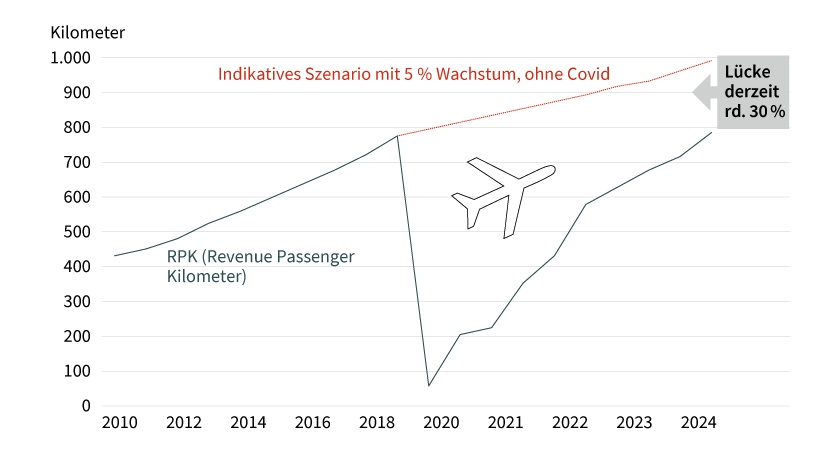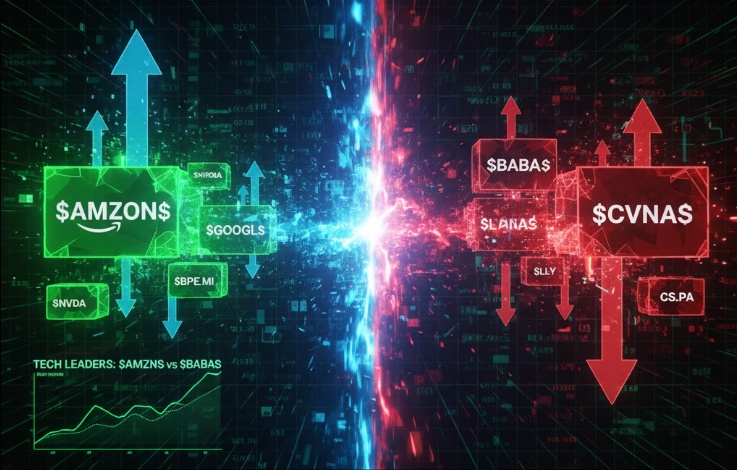Markets are displaying a mixed and cautious tonetoday, struggling to sustain the post-FOMC optimism. While the Fed's dovish signals offer support, earnings reports and sector-specific dynamics are creating significant divergence across the board.
🇺🇸 US Equities (Pre-market/Early Trading)
$SPX500 — Futures suggest a hesitant start, leaning slightly negative as tech weakness offsets gains elsewhere.
$DJ30 — Trading sideways, lacking clear direction amid ongoing sector rotation.
$NSDQ100 — Showing noticeable pressure, pulled down by declines in several major tech components.
💻 Tech & Growth Snapshot
$NVDA (+0,93 %) — Surging significantly higher, clearly outperforming the market and reinforcing its leadership in the AI space.
$GOOGL (+0,02 %) — Trading moderately higher, participating in some tech strength but lagging behind leaders like NVDA.
$AVGO (+0 %) — Experiencing a slight pullback, indicating mixed sentiment within the semiconductor sector.
$META (-0,35 %) — Essentially flat, hovering around the previous close with little momentum.
$MSFT (+0,04 %) — Trading sideways, showing stability but lacking strong buying interest.
$QBTS (+19,88 %) — Likely pulling back sharply, mirroring the negative trend in other speculative quantum names.
$RGTI (+12,29 %) — Undergoing a significant correction, suggesting sharp profit-taking is hitting the quantum computing sector.
$TSM (+0,81 %) — Climbing steadily higher, demonstrating notable resilience and strength within the chip industry.
$$RR. (-1,48 %) — Edging slightly lower, reflecting a cautious stance in the industrial and aerospace sector.
$RKLB (+4,02 %) — Showing modest gains, indicating some investor interest in the space exploration theme.
🛍️ Retail & Commerce
$AMZN (+0,05 %) — Drifting slightly lower, reflecting caution surrounding consumer-focused tech giants.
$BABA (+0,47 %) — Falling sharply, significantly underperforming due to persistent pressures on Chinese equities.
$CVNA (-4,23 %) — Experiencing a minor dip, continuing its recent pattern of weakness.
$SHOP (-0,37 %) — Trading moderately lower, indicating pressure on e-commerce enablement platforms.
⚕️ Health & Pharmaceutical
$LLY (+0,02 %) — Likely trading slightly down or flat, as investors rotate out of defensive pharma names.
$HIMS (-1,98 %) — Holding steady, showing no significant price change.
$INSM (+1,01 %) — Flat, the biotech sector remains cautious.
🇪🇺 Europe & Industrials
STOXX 600 — Mixed performance, struggling to maintain direction as different sectors diverge.
GER40 — Trading cautiously, reflecting the uncertain global sentiment.
$LDO (+0,05 %) — Experiencing moderate declines, suggesting pressure on the defense sector.
$IBE (-1,03 %) — Showing slight gains, with utilities attracting some buying interest as a defensive play.
$OKLO — Pulling back moderately, indicating profit-taking in the nuclear technology space.
$CS (+0,06 %) — Trading moderately lower, reflecting broader caution across parts of the European financial sector.
🏦 Banking & Finance
$UCG (-0,62 %) — Making solid gains, clearly participating in the positive Italian banking trend.
$ISP (-0,2 %) — Climbing strongly higher, another standout performer among Italian banks today.
$BPE (+0,42 %) — Surging dramatically higher, a standout rally significantly outpacing the market.
$CE (-0,52 %) Registering strong gains, joining the broader surge in Italian banks.
$BBVA (-0,23 %) — Advancing solidly, the Spanish bank continues its upward trajectory.
$AXP (-0,06 %) — Edging slightly lower, reflecting caution in the payments sector ahead of data/earnings.
$V (+0,05 %) — Experiencing a minor dip, mirroring the hesitation seen in other payment stocks.
🌏 Asia
$JPN225 / $KOSPI / $HK50 / $CHINA50$ — Likely closed mixed to positive, carrying over optimism from the prior session.
💱 Forex
$DXY — The Dollar Index is trading mixed to slightly firmeras overall risk appetite fades somewhat.
$EURUSD — Likely edging loweragainst a relatively stable Dollar.
$USDJPY — Likely trading slightly higherreflecting cautious sentiment.
💎 Commodities & Precious Metals
$GLD (+1,92 %) — Holding steady, pausing after recent significant moves as markets digest Fed comments.
$CDE (+2,36 %) — Flat, mirroring gold's lack of direction.
$BRENT / $WTI — Likely trading mixed or slightly downas growth concerns temper demand outlook.
💰 Crypto
$BTC (-0,23 %) / $ETH (-0,28 %) — Likely experiencing downward pressure, following the weakness in the Nasdaq and broader tech sentiment.
$TRX (-0,01 %) — Holding steady, showing little movement.
$CRO (-0,15 %) — Not shown, likely tracking the mixed/negative trend in crypto.
📈 Benchmark ETFs
$VOO (+0,05 %) / $VG / $CNDX — Likely trading flat or slightly down, reflecting the mixed and cautious market action.
$BND (-0,42 %) — Likely holding steady or slightly upas bond yields stabilize.
🔎 Deep Dive: Market Divergence Post-FOMC
The initial excitement after the Fed's dovish comments has waned, revealing a highly fragmented market. While potential rate stability provides underlying support, company earnings and sector rotation are the main performance drivers today. Tech shows a clear split: leaders like $NVDA (+0,93 %) and $TSM (+0,81 %) power ahead, while others including $META (-0,35 %) , $BABA (+0,47 %) , and speculative names like $RGT face significant selling. European banks, particularly Italian ones ($UCG (-0,62 %)
$ISP (-0,2 %)
$BPE (+0,42 %) ) along with $BBVA (-0,23 %) , display remarkable strength, contrasting sharply with the caution seen in US payments ($AXP (-0,06 %) , $V (+0,05 %) ). Gold ($GLD (+1,92 %) ) is pausing, suggesting investors are neither fully embracing risk nor rushing to safety, but rather becoming highly selective.
Follow the Analysis:
For daily real-time market insights, deep dives, and trading discussions, follow me on X: https://x.com/ThomasVioli
To copy my portfolio, strategies, and complete trade insights, you can follow me on eToro: https://www.eToro.com/people/farlys]
⚠️ Disclaimer:Past performance is not indicative of future results. Investing involves risks, including the loss of capital.















